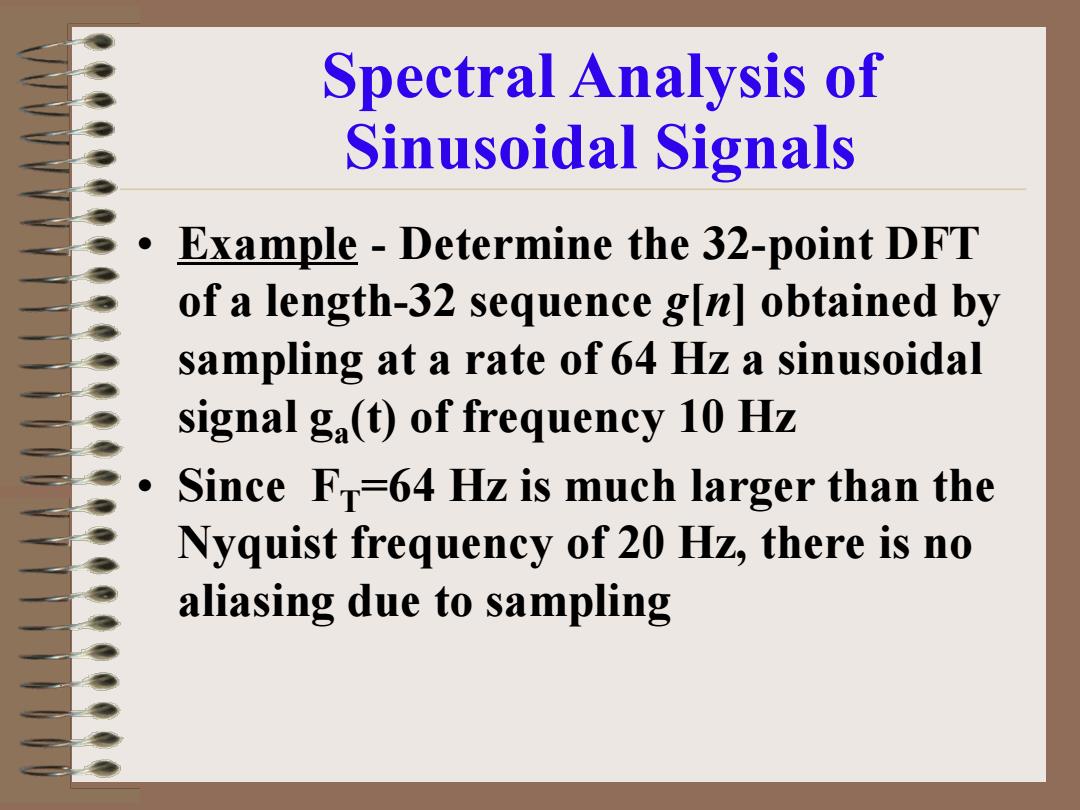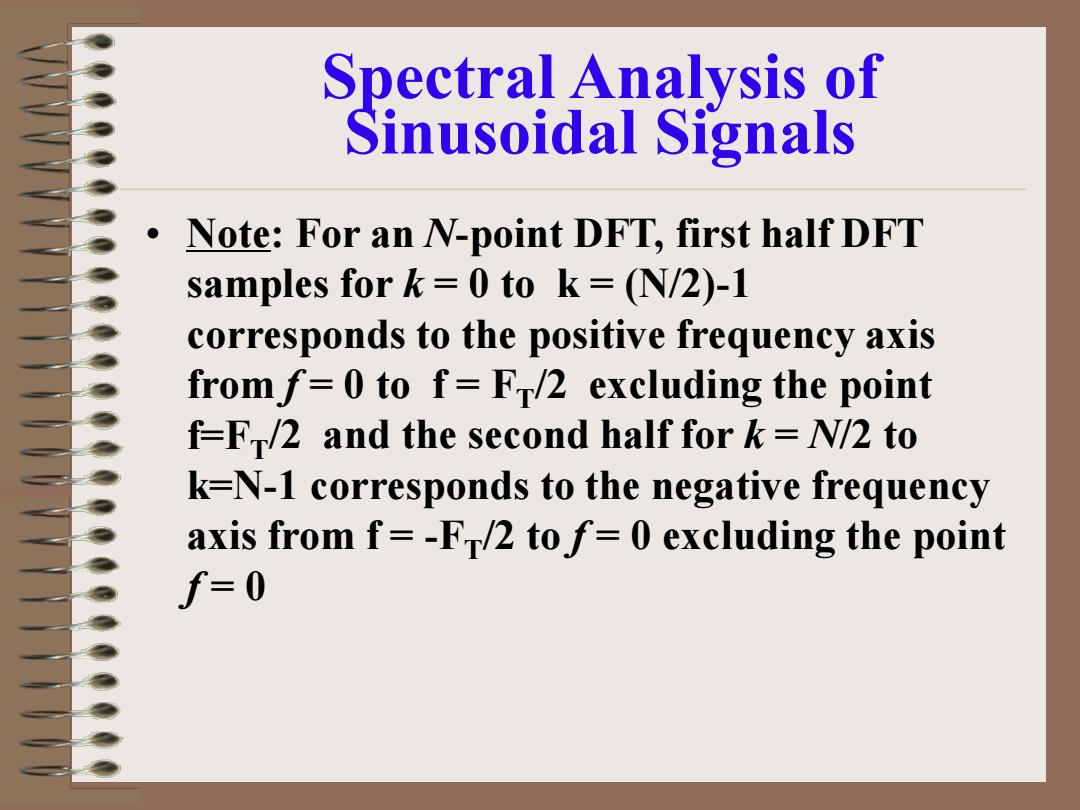
Spectral Analysis of Sinusoidal Signals Example-Determine the 32-point DFT of a length-32 sequence g[n]obtained by sampling at a rate of 64 Hz a sinusoidal signal ga(t)of frequency 10 Hz Since F=64 Hz is much larger than the Nyquist frequency of 20 Hz,there is no aliasing due to sampling
Spectral Analysis of Sinusoidal Signals • Example - Determine the 32-point DFT of a length-32 sequence g[n] obtained by sampling at a rate of 64 Hz a sinusoidal signal ga(t) of frequency 10 Hz • Since FT=64 Hz is much larger than the Nyquist frequency of 20 Hz, there is no aliasing due to sampling

Spectral Analysis of Sinusoidal Signals DFT magnitude plot 15 10 哥 5 0 10 20 30 k Since g[n]is a pure sinusoid,its DTFT T(ei2mt) contains two impulses at f=+10Hz and is zero everywhere else
Spectral Analysis of Sinusoidal Signals Since g[n] is a pure sinusoid, its DTFT Γ(ej2πf ) contains two impulses at f =±10Hz and is zero everywhere else DFT magnitude plot

Spectral Analysis of Sinusoidal Signals Its 32-point DFT is obtained by sampling T(ei2nt)at f=64X2/32=2kHz,0<K<31 The impulse at f=10 Hz appears as G[5]at the DFT frequency bin location k= fR 10×32 =5 Fr 64 and the impulse at f=-10Hz appears as G[27] at bin location k=32-5 27
Spectral Analysis of Sinusoidal Signals • Its 32-point DFT is obtained by sampling Γ(ej2πf ) at f = 64X2/32=2kHz, 0≤k≤31 • The impulse at f = 10 Hz appears as G[5] at the DFT frequency bin location 5 64 10 32 = × = = FT f R k and the impulse at f = -10Hz appears as G[27] at bin location k=32-5 = 27

Spectral Analysis of Sinusoidal Signals Note:For an N-point DFT,first half DFT samples for k=0 to k=(N/2)-1 corresponds to the positive frequency axis from f=0 to f=F/2 excluding the point f=Fr/2 and the second half for k=N/2 to k=N-1 corresponds to the negative frequency axis from f=-F/2 to f=0 excluding the point f=0
Spectral Analysis of Sinusoidal Signals • Note: For an N-point DFT, first half DFT samples for k = 0 to k = (N/2)-1 corresponds to the positive frequency axis from f = 0 to f = FT/2 excluding the point f=FT/2 and the second half for k = N/2 to k=N-1 corresponds to the negative frequency axis from f = -FT/2 to f = 0 excluding the point f = 0

Spectral Analysis of Sinusoidal Signals Example-Determine the 32-point DFT of a length-32 sequence g[n]obtained by sampling at a rate of 64 Hz a sinusoidal signal xa(t)of frequency 11 Hz Since g[n]is a pure sinusoid,its DTFT T(eizrf) contains two impulses at f=+11Hz and is zero everywhere else
Spectral Analysis of Sinusoidal Signals • Example - Determine the 32-point DFT of a length-32 sequence g[n] obtained by sampling at a rate of 64 Hz a sinusoidal signal xa(t) of frequency 11 Hz • Since g[n] is a pure sinusoid, its DTFT Γ(ej2πf ) contains two impulses at f =±11Hz and is zero everywhere else